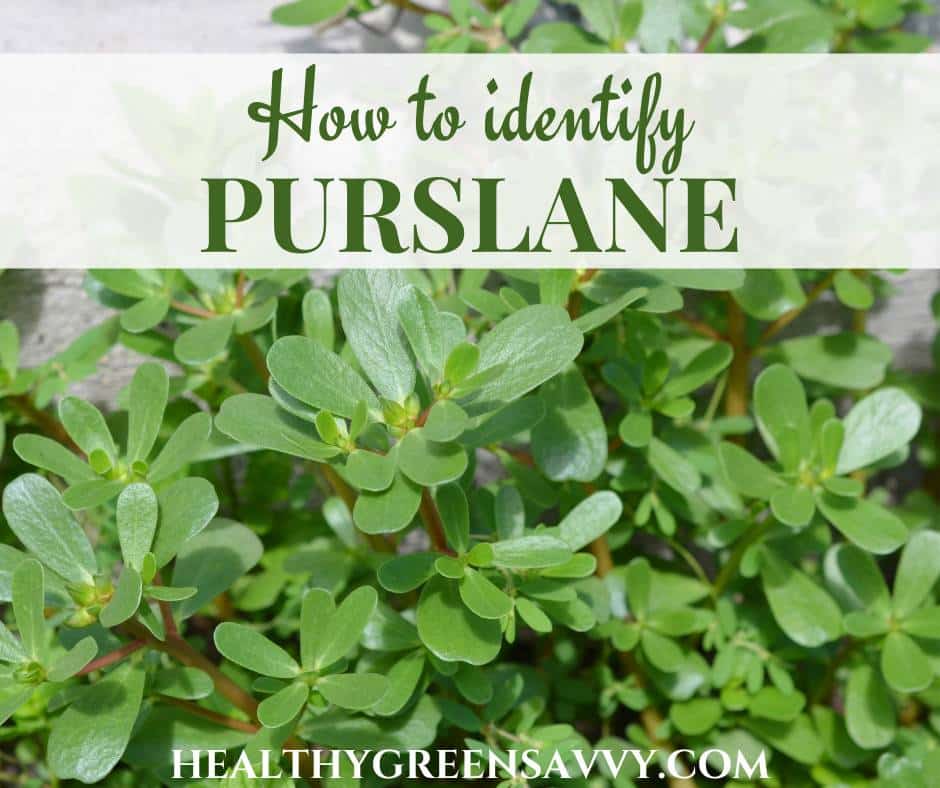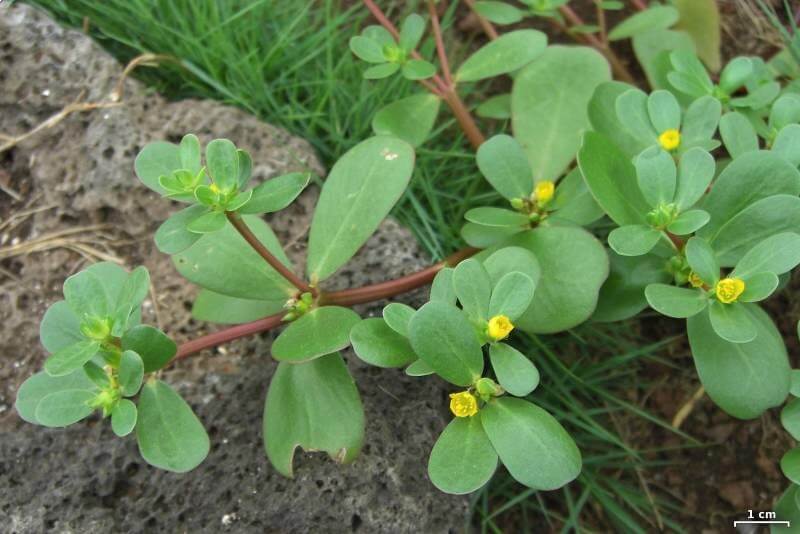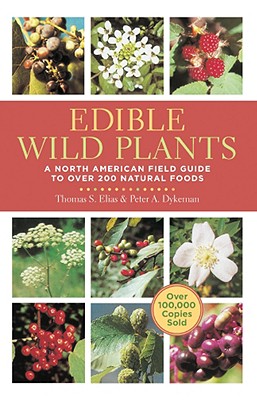Last Updated on March 6, 2024
If you’re looking for something nutritious and delicious to forage this season, you need to get to know purslane, an edible wild plant that has gained superfood status. Here’s what to know about how to identify purslane and which purslane look alikes to watch out for.

FORAGING PURSLANE
Do you love foraging wild foods like tasty dandelions and wild black raspberries? If you haven’t yet discovered purslane, you’ll be thrilled to learn that this common wild plant is viewed as a prime vegetable in much of the world. In North America, however, it’s commonly mistaken for a weed. Time for purslane to get a little more recognition round these parts!
Far from being a useless weed, purslane (botanical name Portulaca oleracea) is considered an especially nutritious vegetable because of its exceptionally high concentration of omega-3s. It’s rich in many other beneficial compounds as well as vitamins and minerals as well. You can find more detailed information on purslane nutrition in the FAQs at the bottom of the post.
Once you know how to identify purslane, you’ll be looking for it everywhere to use in all sorts of delicious purslane recipes. Also known as pigweed, purslane is a prized vegetable in many cultural traditions, and is known more widely as verdolagas in Spanish.
HOW TO IDENTIFY PURSLANE
The first rule of foraging is to ALWAYS consult a good field guide before picking any wild food. Check out some of the best foraging books I’ve found.
If you’d like to become more expert in the art of foraging, the Herbal Academy has an online foraging course that teaches plant identification and ethical wildcrafting practices.
The second rule of foraging is to always be sure that anywhere you forage purslane or other wild plants hasn’t been treated with chemicals. This would include the sidewalk cracks purslane loves to grow in, as they likely accumulate whatever chemicals have run off there or been tracked on the soles of people’s shoes.
WHAT DOES PURSLANE LOOK LIKE?
PURSLANE IDENTIFICATION: GROWTH HABIT
Purslane plants have sprawling growth habits and branching, thick, red stems. The wild variety tends to grow low to the ground, though occasionally plants send a few shoots upwards. If you plant purchased seeds, you may find they grow more upright. Purslane may grow up to 16 inches tall.
Technically a tropical perennial in zones 10-11, purslane grows as an annual in much of the world. However, its plentiful seeds mean that you will often find purslane plants cropping up in the same places in your garden year after year.

LEAVES
Purslane has smooth, fleshy leaves that are pretty recognizable. Many people find purslane’s succulent leaves similar in look to jade plant (Crassula ovata), a common houseplant that is NOT edible.
Purslane leaves are elongated ovals with rounded tips and tend to appear in star-shaped clusters of 4 at the end of the stem branches. They’re smooth and grow in an alternate pattern. They will sometimes have reddish edges.
FLOWERS
Purslane has inconspicuous yellow flowers that bloom in midsummer. Each has 5 petals and measures about 1/4″ wide.
Purslane flowers are among the more than 150 flowers you can eat with your next foraged meal.
SEEDS
Purslane flowers will eventually produce numerous pods filled with tiny black seeds that resemble poppy seeds. Purslane seeds are also edible, though quite inconvenient to collect.
IDENTIFY PURSLANE: KNOW POISONOUS PURSLANE LOOK-ALIKES
Once you get to know purslane, you’ll have no trouble identifying it correctly, but before you’re fully familiar, it’s important to know how to distinguish purslane from its poisonous look alikes.
The primary purslane look alike to watch for is prostrate spurge (Euphorbia prostrata), another creeping plant with reddish stems that often can be found growing near purslane. Spotted spurge (Euphorbia maculata) is a very similar plant that should also be avoided.

The stems and leaves of spurge are not succulent like purslane’s, and spurge tends to grow flatter to the ground than common purslane. Spurge’s leaves have serrated edges, while purslane’s are smooth. As you can see in the photo above, euphorbia leaves grow in opposite pairs rather in whorls like purslane’s.
Spurge has one key feature that can (usually) help solidify your identification: It almost always contains a white sap called latex you’ll see if you break the stem. No sap will come out if you break a purslane stem. Spurge’s sap can cause skin irritation, so don’t go playing with the sap after you’ve broken the stem to identify spurge.
Though spurge sap is an especially helpful way to identify poisonous spurge, be aware that smaller spurge plants may not have visible latex, and you need to positively identify purslane using all the features of the plant described above.
Learning to identify purslane vs spurge isn’t difficult, but it’s important. These two plants often grow right next to each other, and only one of them is safe to eat. Find out how to distinguish spurge vs purslane.
If you do accidentally ingest spurge or get its sap on your skin, here’s what Poison Control recommends doing.
PURSLANE FAQs
WHERE TO FIND PURSLANE?
While you will very occasionally find purslane for sale in specialty grocery stores, you’re much more likely to find it growing in the cracks of sidewalks and disturbed areas of your garden.
I usually find a few plants in my garden and in between plants at my CSA, where picking purslane is actually a public service, since it lessens the weeding they need to do.
Purslane grows all over the world, in Europe, Africa, Asia, Australia, and the Americas. It was thought to have been introduced to North America by European settlers, though scientists have found evidence in pre-Columbian deposits that it preceded European contact.
In North America it’s generally considered an invasive weed. More reason to pick it in large quantities to enjoy in foraged salads and smoothies.
IS PURSLANE GOOD FOR YOU?
Purslane is prized for its exceptionally high amounts of omega-3s. It’s also an excellent source of antioxidants and several minerals, notably magnesium and potassium.
In The Green Pharmacy James Duke writes, “Exceptionally rich in antioxidants, purslane is the top herb that pops up in my database when I’m looking for combinations of the antioxidant vitamins A, C, and E. It’s also rich in the compound glutathione, which is both a powerful antioxidant and an immune system booster.”
Duke also notes purslane as a rich source of magnesium and suggests its usefulness for a range of ailments, including headaches, chronic fatigue, and depression. Its antioxidants, he suggests, may help protect against cardiovascular disease and cancer.
In addition to being edible, purslane has many traditional medicinal uses. Several Native American tribes used it both as food and medicine. The Peterson Guide to Medicinal Plants and Herbs notes that Native Americans used common purslane as a poultice for burns, its juice for earaches, and tea made from purslane for headaches. In Europe they note its traditional use as a poultice for treating inflammation, sores, and eczema. A cooling herb, purslane has other herbal uses described here.
Purslane leaves and stems contain a high concentration of mucilage, considered immensely helpful for healing in herbal medicine.
WHAT DOES PURSLANE TASTE LIKE?
Purslane’s succulent stems and leaves are juicy and have a bit of a crunch. They typically have a sour flavor, which I find more prominent in the stems. I generally enjoy sour foods (like rhubarb and hibiscus), but I find the stems can be a bit much in salads and stir fries, and tend to favor purslane leaves. Herbalist Maud Grieve notes that older stems were typically used as a potherb.
When cooked, purslane’s high mucilage content can make your dish a little… well, slimy, so be forewarned if you’re planning a big purslane soup.
WHAT PARTS OF THE PURSLANE PLANT DO YOU EAT?
All above-ground parts of the purslane plant are edible: leaves, stems, flowers, seeds. I’ve never seen anyone mention the roots specifically, but they’re small and hard to clean, so it’s easiest to skip them.
You can snip off stems together with leaves and flowers and toss the whole lot in your smoothie. For salads, I recommend focusing on the leaves and flowers.
IS All PURSLANE EDIBLE? IS ORNAMENTAL PURSLANE EDIBLE?
The species of purslane you’ll often find sold as ornamental plants is Portulaca grandiflora, also known as moss rose. Sources I’ve consulted suggest that while it may technically be edible, it’s quite bitter, and since I can’t point you to something definitive about the edibility of all purslanes, I recommend sticking with plants you’ve positively identified as common purslane for eating purposes.
HOW DO YOU PREPARE PURSLANE?
I’m so glad you asked! It just so happens that one of HealthyGreenSavvy’s most popular posts is a collection of purslane recipes. Be sure to check it out.
Purslane can be used raw or cooked, in salads, stir-fries, and soups. It’s also a great addition to healthy smoothies, and is featured in my anti-inflammatory smoothie with purslane, ginger, and pineapple.
Purslane tends to come in when other garden veggies are plentiful, so you can freeze some to add to smoothies when the garden produce winds down.
Here are dozens more wild greens you can explore this season.
If you love foraging tasty seasonal ingredients for your next meal, be sure to check out these other flavorful wild foods:
- Spruce tips
- Wild Spinach
- Edible Chickweed
- Strawberry Blite
- Canadian Wood Nettle
- Edible Mulberries
- Wild Herbs
Now that you know how to identify purslane, head on out and gather yourself some delicious wild food!
Save this info on how to identify purslane for later!

Additional how to identify purslane photo credits: Cover photo by hongquang09, photos in pin by ErikAgar and nzfhatipoglu
Disclaimers: Though HealthyGreenSavvy and EcoSavvy Writing LLC always aim to provide thorough and accurate information, we assume no liability or responsibility for any consequences, health issues, or symptoms that arise from ingesting or touching any plant described on this website. It is always the reader’s responsibility to ensure accurate plant identification and use multiple reputable sources to confirm. If you have any doubts about the identification of any plant, do not eat it.

Susannah is a proud garden geek and energy nerd who loves healthy food and natural remedies. Her work has appeared in Mother Earth Living, Ensia, Northern Gardener, Sierra, and on numerous websites. Her first book, Everything Elderberry, released in September 2020 and has been a #1 new release in holistic medicine, naturopathy, herb gardening, and other categories. Find out more and grab your copy here.



 Hi, I'm Susannah, a garden geek, energy nerd, and fan of healthy food and natural remedies. Need some simple, practical solutions for living healthier and greener? You've come to the right place! More about me and my green projects
Hi, I'm Susannah, a garden geek, energy nerd, and fan of healthy food and natural remedies. Need some simple, practical solutions for living healthier and greener? You've come to the right place! More about me and my green projects